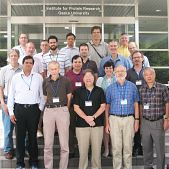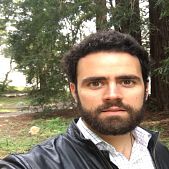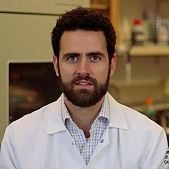
Sheds light to the immune system
Nik Sgourakis is Assistant Professor of chemistry and biochemistry at UCSC (University of California Santa Cruz). He is in charge of the Sgourakis Research group at UC Santa Cruz, where his team studies proteins of the immune system that play important roles in human health, infectious disease, and cancer. To perform their role, these proteins must interact with biomolecules, such as other proteins and/or peptides. Elucidating these molecular interactions at high resolution will provide information towards understanding the biochemistry of pathogenesis. The team employs a variety of state-of-the-art biophysical techniques, including X-ray crystallography, fluorescence spectroscopy, solution NMR, and computational modeling. Determining the molecular basis of protein-protein interactions and their dynamics would help understand fundamental biological mechanisms towards the design of novel therapeutics.
Nik Sgourakis was born in 1982. During his postdoctoral work with David Baker and Ad Bax, he developed Rosetta methods for determining the structures of protein complexes from sparse NMR data. In his Ph.D. with Angel Garcia at Rensselaer Polytechnic Institute, he used enhanced sampling MD simulations to model intrinsically disordered proteins. In his Master’s degree in Bioinformatics from the National University of Athens, Greece he developed Hidden Markov Models that predict properties of G-protein coupled receptors. From 2013 to 2015 he was Intramural Research Fellow at the National Institute of Diabetes and Digestive and Kidney Diseases (NIDDK). During 2010-2012 he was a Visiting Fellow at University of Wisconsin.
He is part of a team of scientists at UC Santa Cruz and the National Institutes of Health, which has obtained the first glimpse of the molecular mechanism by which recognition of an antigen (such as a viral protein) by the T cell receptor triggers the first steps leading to an immune response. The immune system cells known as T cells play a central role in the body’s ability to fight infections and cancer. For decades, however, details of the molecular signaling process that leads to T cell activation have remained a mystery.
The new findings, published May 16 in Nature Communications, implicate changes in the molecular structure of the T cell receptor that propagate from the antigen recognition site on the outside of the cell to a signaling site inside the cell. The activation signal then triggers a complex “signaling cascade” within the T cell, leading to a range of possible responses by the cell.
“This provides the first hint of the mechanism that triggers that signaling cascade,” said Nikolaos Sgourakis, co-senior author of the paper. “We don’t yet have a full reconstruction of the signaling system, but for the first time we can see the process, and we have a technique to study it in more detail.”
The key technique used in this study is nuclear magnetic resonance (NMR), which uses the same principles as medical MRI scans to study molecular structures in a test tube. Sgourakis and his colleagues analyzed a molecular complex involving a T cell receptor and an HIV protein bound to a molecule of the major histocompatibility complex (MHC). The ability to probe such a large molecular complex with NMR was a breakthrough in this study, he said.
In a viral infection, MHC molecules present pieces of viral proteins (antigens) on the surface of an infected cell, where they can be recognized by T cells and trigger an immune response. Abnormal proteins produced by cancer cells give rise to tumor antigens, which are also presented on the cell surface by MHC molecules and can be recognized by T cells.
“Different peptides or antigens give different outcomes. Now we can study those differences, and perhaps we will be able to predict which are the most efficient tumor peptides for triggering T cell activation,” Sgourakis said. “The fundamental question of how T cell signaling works is vital for cancer immunotherapy. This is basic research, but there could be important applications down the road.”











